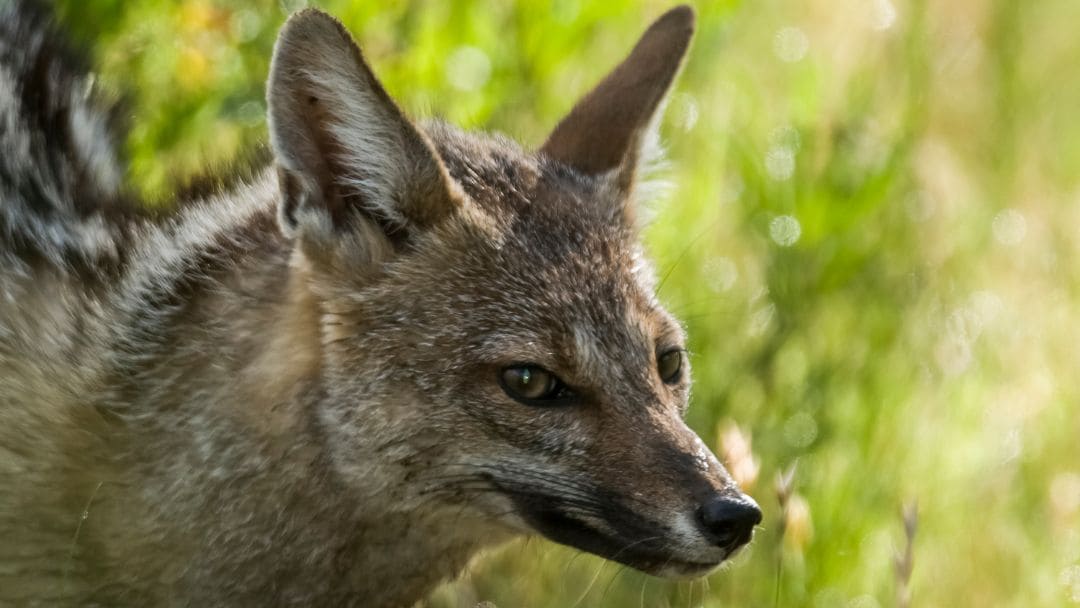Swift Foxes, North America’s speed demons, are masters of the hunt with a remarkable social structure. However, habitat loss threatens their survival, highlighting the importance of conservation efforts.
Imagine a blur of fur streaking across the vast grasslands of North America. This isn’t the wind – it’s the Swift Fox (Vulpes Velox) in action! Living up to their name, these remarkable foxes are famed for their incredible speed, making them cunning hunters and fascinating creatures.
Let’s explore the world of the Swift Fox, delving into their lightning-fast agility, cooperative hunting strategies, and the pressing conservation challenges they face in the modern world.
Built for Speed: Masters of the Grassland Chase
The Swift Fox’s name isn’t just a catchy title – it’s a testament to their incredible physical adaptations:
- Speed Demons: Swift foxes are one of the fastest land animals in North America, reaching speeds of up to 40 miles per hour! Their slender bodies, long legs, and streamlined build are perfectly designed for chasing down prey across the open grasslands.
- Agile Hunters: Their agility isn’t just about speed. They can make sharp turns and navigate through tall grasses with remarkable ease, allowing them to outmaneuver their prey.
This combination of speed and agility makes them highly successful predators in their grassland habitat.
Teamwork Makes the Dream Work: Cooperative Hunting Strategies
Swift Foxes aren’t just fast – they’re also surprisingly social creatures. Unlike many solitary fox species, they often form:
- Monogamous Pairs: These bonded pairs work together to raise their young and hunt for food.
- Small Family Groups: Sometimes, Swift Fox families may include offspring from previous litters, creating a cooperative hunting unit.
This teamwork allows them to be more efficient hunters. For example, one fox might flush out prey from hiding, while another waits to pounce.
A Race Against Time: Habitat Loss and Conservation Challenges
While Swift Foxes are masters of survival with their speed and social strategies, they face a significant threat – habitat loss. Here’s why their future is uncertain:
- Shrinking Grasslands: Their natural habitat, the vast North American grasslands, are being converted for agriculture and urban development at an alarming rate.
- Fragmented Landscape: As their habitat gets broken up into smaller, isolated patches, Swift Fox populations become fragmented, making it harder for them to find food, mates, and raise young.
The Fight for Survival: Conservation Efforts Offer Hope
The good news is that dedicated conservationists recognize the importance of protecting these speedy predators and their vital role in the grassland ecosystem. Here’s what’s being done to help:
- Habitat Protection: Organizations are working to conserve and restore remaining grasslands, providing Swift Foxes with the space they need to thrive.
- Raising Awareness: Spreading awareness about the challenges Swift Foxes face is crucial to garnering public support for conservation efforts.
- Reintroduction Programs: In some areas, reintroduction programs are underway to re-establish Swift Fox populations in suitable habitats.
A Race Worth Winning: The Importance of Conservation
The story of the Swift Fox is a reminder that even the most well-adapted creatures face challenges in our changing world.
Their fight for survival highlights the importance of global conservation efforts to protect not just these speedy predators but also the delicate balance of the ecosystems they call home.
By understanding the threats they face and supporting conservation initiatives, we can help ensure that future generations can continue to witness the awe-inspiring blur of the Swift Fox across the grasslands.
Swift Fox FAQs: Unveiling the Secrets of North America’s Speedster
Why are Swift Foxes called Swift Foxes?
Swift Foxes live up to their name! They are one of the fastest land animals in North America, reaching speeds of up to 40 miles per hour. Their slender build, long legs, and agility make them perfectly suited for chasing prey across open grasslands.
How do Swift Foxes hunt?
Swift Foxes are not just fast, they are also surprisingly social creatures. They often work together in:
– Monogamous pairs: These bonded pairs collaborate to raise their young and hunt for food.
– Small family groups: Sometimes, offspring from previous litters might stay with the family unit, creating a cooperative hunting team.
This teamwork allows them to be more effective hunters, with one fox flushing out prey while another is ready to catch it.
What are the biggest threats to Swift Foxes?
The biggest threat to Swift Foxes is habitat loss. Their natural grassland homes are shrinking due to conversion for agriculture and urban development. This fragmentation of their habitat makes it harder for them to find food, mates, and raise young.
Are Swift Foxes endangered?
Swift Foxes are not currently classified as endangered. However, habitat loss remains a significant threat, and conservation efforts are crucial to ensure their long-term survival.
What can we do to help Swift Foxes?
There are several ways you can help Swift Foxes:
– Support conservation organizations: These groups work tirelessly to protect Swift Fox habitat and raise awareness about the challenges they face.
– Learn more about grassland ecosystems: Understanding the importance of these habitats is key to protecting them and the species that rely on them.
– Spread awareness: Talk to friends and family about the plight of the Swift Fox and the importance of conservation.


